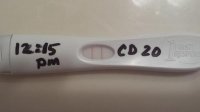Endometriosis and Abnormal Bleeding
Endometriosis does not itself cause the uterus to bleed abnormally. More specifically, it does not cause the brain, ovary, or uterus to malfunction. However, it does create problems, which can, in turn, affect any of those areas. Therefore, when a woman with endometriosis has abnormal bleeding, we have to look for indirect effects of the endo and for several other possible reasons for it.
Let's consider some examples of abnormal uterine bleeding caused indirectly by endometriosis.
Ovarian endometriomas (chocolate cysts) can get large enough to put so much pressure on the rest of the ovary that it is not able to respond to stimulation, or is not able to complete the ovulation process. This then leads to abnormal hormone production and possible bleeding abnormalities.
Ovaries can become encased by adhesions due to endometriosis. The endo irritates the tissues it's on, and the adhesion forms as your body attempts to wall off the offending area. When the ovary is entrapped this way, cysts can form and abnormal hormone production can result.
Many of the medical treatments for endometriosis have as their purpose the modification of your hormones. The response to these drugs is quite variable. Abnormal bleeding is very common with Depo-provera. Lupron, Synarel and Danocrine can all cause abnormal bleeding by interfering with normal ovarian hormone production.
Hypothalamic-induced abnormalities may occur when the pain of endo causes the patient extreme stress and anxiety. Some patients lose significant amounts of weight because of nausea and other gastrointestinal symptoms.
Many patients on drug therapy do not get the expected amounts of hormone administration due to malabsorption of the drug from their gastrointestinal tract. Pain, stress, and other medications (especially pain meds, laxatives, and anti-depressants) can affect how well or poorly the drug is absorbed. The entire drug must be properly absorbed for the blood levels to reach the desired state. Poor absorption thus creates inconsistent responses to the therapy.
The end result is that many women with endometriosis do have abnormal bleeding. The doctor must evaluate each patient individually to look for the influence of endometriosis on the above-mentioned factors, and also bleeding that has causes totally independent of the endometriosis.
When all the endometriosis is completely removed, many patients will see their bleeding patterns restored to what is normal for them. Others (whose bleeding problem has nothing to do with endometriosis) may not see change.
It is important to realize that women who have excision often have an interval of abnormal bleeding afterwards. This may be because the manipulator used inside the uterine cavity to move it during surgery can irritate the endometrium. If the ovaries also required surgery, the return to normal function can take 2-3 months. This can also cause an interval of abnormal bleeding post-op.
Finally, I would like to mention one more situation that is potentially of great concern (though thankfully very uncommon). Sometimes, when both ovaries are riddled with endometriosis, we must remove substantial amounts of them. We do not remove healthy tissue, only that which is already lost to disease. In more than 800 patients, we not have three women who had premature menopause post-op. This might have occurred anyway because of the destruction of the ovarian tissue by extensive endo; we just don't know.
Women are born with such a vast reserve of ova (eggs) that only a small amount of ovary can produce the required hormones and even generate a pregnancy. You don't need a lot of ovary, but the ovary you have must be healthy. In the huge majority of cases, even with significant surgery on the ovaries, the age at which a woman reaches menopause remains within normal limits
https://www.centerforendo.com/articles/abnormalbleeding.htm




 fallback rise!
fallback rise!

